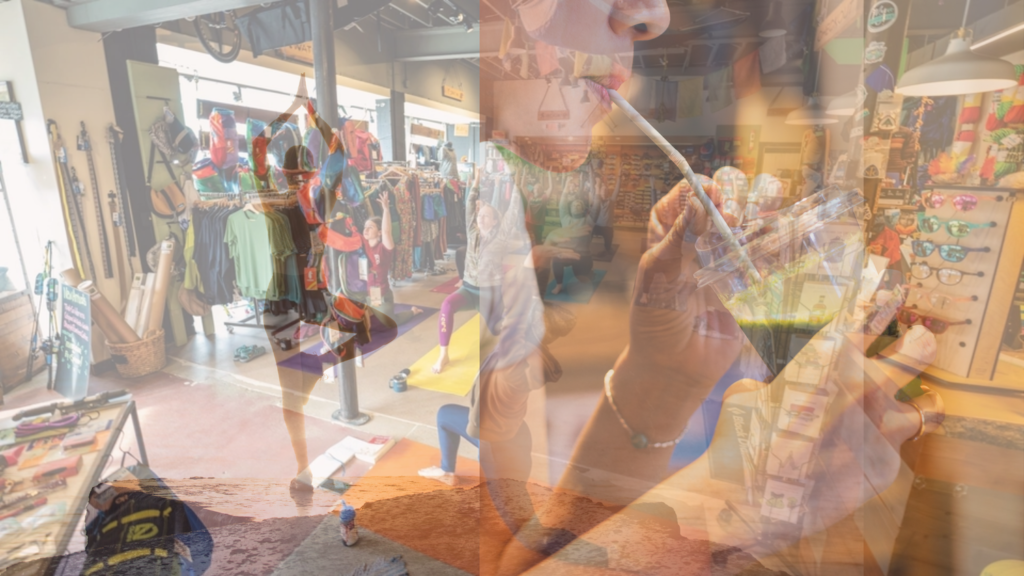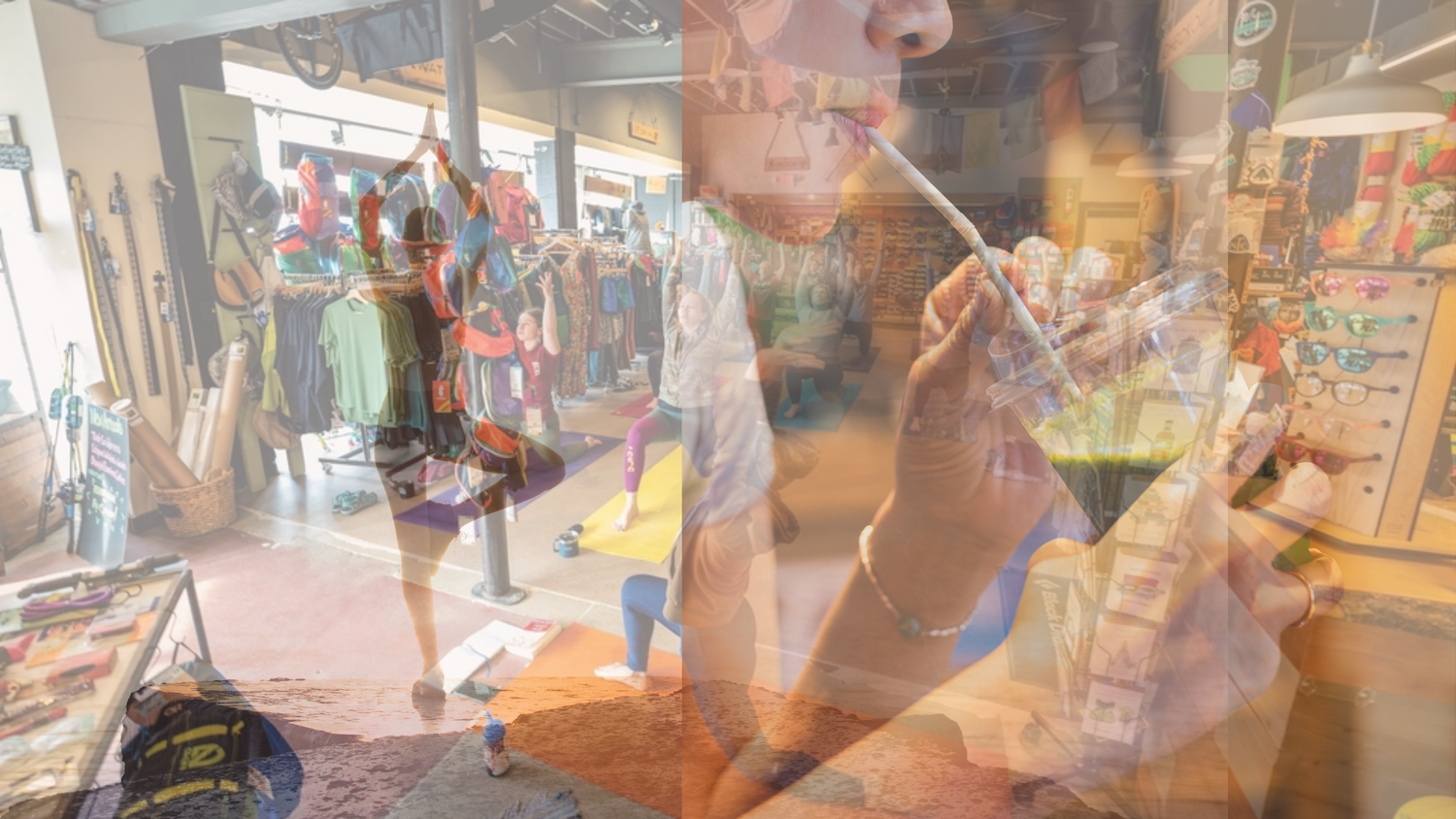
Creating a brand community has always been an important marketing concept and a valuable brand asset. Many brands have been particularly attentive to strengthening their community relations during and after the global health crisis (COVID-19). They understood to what extent building and maintaining a relationship with their clients had an impact on their survival. Examples of brand communities include Apple enthusiasts forming online forums, Harley-Davidson motorcycle owners participating in rallies, or Nike fans engaging on social media. Other brands, such as LuluLemon or Huda Beauty, have invested in the power of digital to grow a following and establish an engaged community.
A ‘brand community’ refers to a group of consumers who share a common interest or passion for a particular brand. They actively interact with the brand, its products or services, and with one another, forming a sense of belonging and loyalty. The brand acts as a central connecting point and provides a platform for interaction between its members. Brand communities often grow organically but may also be facilitated and nurtured by the brand itself. Brand community members identify themselves as part of the community and feel a sense of belonging. They share common values, interests, and experiences related to the brand. Moreover, they actively participate in co-creating content, providing feedback, or shaping the brand’s direction. In fact, brand community members actively engage with the brand.
The notion of ‘community retailing’ is quite different; it focuses on the physical or digital spaces where retail businesses operate and interact with their customers. It places emphasis on integrating the retail environment with the local community and building strong relationships between the retailer and customers. Community retailing aims to create a sense of belonging in the retail space by fostering customer engagement, retention and a supportive local economy. Traditionally, community retailing initiatives included local farmers’ markets, boutique stores hosting art exhibitions or workshops, or retailers supporting neighborhood cleanup campaigns. More recently, retailers are embracing local retailing to connect with communities, support local economies, and meet the changing preferences of consumers. The trend reflects a growing desire among consumers to support local businesses, connect with their communities, and have a more personalized and authentic shopping experience.
Physical retail can encourage developing retail communities.
Physical retail can encourage the development of retail communities by fostering a sense of belonging, collaboration, and engagement among customers and local businesses. However, it is an ongoing process that requires consistent effort and a genuine commitment to customer engagement. Retailers need to embrace physical spaces and give customers the opportunity to actively participate in the space. Customers are also the primary drivers of the project and its sustainability. As local retail becomes a vibrant scene, retailers and customers must both commit to making the project a success.
“Everything should revolve around “us”, “here” and “now””
In line with local authorities to revive “local retail” and retailers’ efforts to stay relevant and loyal to customers, there should be a new school of thought.
- A shift from investing “spaces” to investing “environments”.
- A shift from “customers” to “communities”.
- A shift from “communications” to “conversations”.
| Environment | Create a welcoming atmosphere | Physical stores should strive to create a warm and inviting atmosphere that encourages clients to spend time in the space. These can include comfortable seats, nice lighting and well-designed store layouts. |
| Store design and aesthetics | Retailers integrate local elements, themes or artworks into their store designs. This may include the use of locally inspired scenery, the presentation of works by local artists, or significant historical or cultural references for the local community. By reflecting the local flavour in the store’s design, retailers create a sense of belonging and strengthen their relationship with the community. | |
| Gathering spaces | Dedicating areas within the store for customers to socialize, relax, or work. This can include creating a cozy coffee corner, communal tables, or reading nooks. By offering people spaces where they can connect, brands encourage them to spend more time in stores, fostering a sense of belonging. | |
| Pop-up shops and marketplaces | Retailers are creating opportunities for local businesses and entrepreneurs to showcase their products through pop-up shops or shared marketplaces. | |
| Hyperlocal marketing | Retailers implement hyperlocal marketing strategies to reach customers in specific neighbourhoods and regions. This includes adapting marketing messaging and campaigns to resonate with the local community, using location-based targeting and leveraging community-specific channels. for example, local publications or community websites. | |
| Community | Community events | Organising events that bring together customers and local companies. This could take the form of workshops, product demonstrations or even cultural celebrations. Through events like this, the store becomes a hub for community engagement, allowing people to connect and interact with each other. |
| Philanthropy and community support | Organising events that bring together customers and local companies, engage in corporate social responsibility initiatives that benefit the local community. This could include supporting local charities, holding fundraisers, or attending community cleanups. By giving back to the community, retailers demonstrate their commitment to local well-being and build goodwill among customers. | |
| Supporting local artisans and suppliers | Brands could collaborate with local artisans, artisans and suppliers to present their products at the store. By showcasing local talent and unique offerings, brands not only support the local economy, but they also provide customers with a reason to visit their own store and discover something new. | |
| Collaborating with other businesses | Partnering with nearby companies creates cross-promotion opportunities. These can include joint marketing campaigns, shared loyalty programs, and collaboration events. By working together, businesses can benefit from others’ customers and strengthen the retail community. | |
| Community-focused events | Retailers host events which celebrate local community and culture. This may include organizing workshops, launching products showcasing local influencers, or sponsoring community events and festivals. Through active participation at community events, retailers foster a sense of connection and demonstrate their commitment to the region. | |
| Conversations | Encouraging customer feedback and input | Soliciting client feedback and actively listening to their suggestions may include the implementation of suggestion boxes, conducting surveys or holding focus groups. Engaging customers in decision-making processes makes them feel valued and increases their sense of belonging to the retailer community. |
| Local product sourcing | Retailers rely more and more on local artisans, manufacturers and suppliers. By offering local and locally sourced products, retailers support local businesses, provide unique offerings and respond to consumer preferences that value local products. | |
| Embracing technology | In-store technology integration to improve the customer experience includes interactive displays, personalized recommendations or on-line and off-line shopping experiences. By adopting technology, brands can create a modern and vibrant retail environment that leverages technology-savvy, and connected, customers. |

What role retail design plays in fostering retail communities?
Retail design plays an important role in promoting retail communities through the creation of attractive, functional and supportive spaces for community interaction. An attention to design is a key success factor. The exterior design and window display are the first impression for clients and passers-by. A well-designed display window that matches the aesthetics, culture and values of the local community can attract attention and people in the retail space. It sets the tone for the overall retail experience and can help build a sense of pride and belonging among community members.
Store design and workflow can encourage customers to explore different areas of the store and interact with a variety of products. Consequently, the integration of dedicated community spaces in the retail environment promotes a sense of belonging and encourages community interaction. By strategically locating high traffic and community areas, such as seating areas, demonstration spaces or communal tables, retail design can facilitate spontaneous interactions and promote socialization between clients. These “gathering places” encourage social involvement and facilitate connections between customers.
Effective visual merchandising can showcase local products, highlight community events, or communicate the store’s values and engagement with the community. It is crucial to curate displays that reflect the local community, retail design reinforces a sense of identity, attracts like-minded customers, and sparks conversations among shoppers. With visual merchandising, retailers provide a scene on which community members live their story.
As people change, preferences change, and conditions change, commercial spaces should change. Retail environments that should be scalable and flexible to host a variety of community events and activities. Design features such as mobile fixtures, modular furniture or flexible display areas make reconfiguration easy, allowing the store to host different types of gatherings, workshops or pop-up events. This flexibility is in keeping with the changing needs of retailers.
Incorporating technology that connects customers to local businesses or community initiatives can strengthen the link within the retail community. Integrating technology with retail design can improve the customer experience and drive community engagement. Interactive displays, digital signage or virtual reality experiences can offer customers attractive and personalised experiences. They broaden the possibilities of communication from the physical to the digital sphere.
If retailers become more relevant to the hearts and minds of clients, they should actively demonstrate their social and societal involvement. The integration of sustainable and green design components demonstrates a commitment to the well-being of the community. The use of energy-efficient lighting, environmentally friendly materials or the implementation of recycling programs convey a sense of responsibility and appeal to clients who favour sustainable development. A retail design that supports sustainability can inspire the community and foster conscious consumer behaviour.
By considering these factors, retail design can shape the physical environment in a way that fosters community engagement, promotes social interaction, and creates a welcoming space for customers to connect and participate in the retail community. Local retail environments will hold a meaning that goes beyond the transactional definition. They will be unique in their own way and meaningful to all those who have invested in them.






